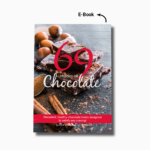Fat was never a dirty word, before the 1960’s, lard or dripping on bread was a favourite, bacon and eggs were a traditional breakfast and the fat on the meat was a treat. Yet today many people have a fat phobia, making sure that it is not in the diet, hunting through the many packaged foods for the low fat variety or making sure that the heart foundation has placed their tick of approval on a product, knowing that they are doing the best for their body. But are they?
But since the 1960’s for all the nations that have taken on the low fat mantra, while we may not be eating it, we sure are stacking it on the body. Obesity rates are increasing, morbid obesity is at an all time high and heart disease tops the biggest killer.
If as a nation or as an individual we continue to do the same thing then we will continue to get the same result, so the most sensible thing to do is to try something different, or something quite old.
Fat is not the enemy, it is a very important path to health and without it we would not be able to make hormones, vitamin D, vitamin K, all our cells and brain tissue. Fat not only makes things but has an important part to play in our structure. Structural fat gives us beautiful cheeks, padding under our heels, protection for vital organs and curves of a woman’s body. Fat is also required for energy, in fact fat is a better quick energy source then sugar.
So how did we get it so wrong. To answer this let’s go back in history, back to the 1960’s. A researcher by the name of Ancel Keys had a theory that fat consumption caused heart disease. He did epidemiological studies (population studies) in 21 countries then manipulated and cherry picked the results to match his theory. As a result the infamous 6 and 7 country studies was the basis of the low fat revolution and fat phobia. The other 14 countries were discarded as they did not match the criteria of Key’s theory. Ancel Key’s convinced the American Heart Foundation and the momentum and mantra for low fat became normal dietary advise.
Since that time the low fat revolution has changed slightly from not so much about low fat but rather about the type of fat we consume. No doubt you have heard all the terms bantered around like; omega 3, 6 and 9, polyunsaturated, monounsaturated, saturated, EPA, DHA, GLA, AA, trans fats, essential, non essential, animal fat, vegetable fat and fish oil.
Let’s look at the facts. Throughout the history of eating up until last century our fat consumption changed with the seasons – it was never stagnant. In the summer our saturated fat would increase while in the winter our unsaturated fats would be bountiful. During the summer the roaming wild beasts would have more food, put more weight on, not in muscle but in saturated fat and we would be none the wiser and eat the meat. When winter came the opposite would occur and the meat would be less marbled with fat, but nuts and seeds became plentiful so our fat intake would be more unsaturated. If we lived near cold water (fresh or ocean), the fish we caught would be high in fish oil content in the winter, but lower in the summer when the water temperature rose. If you lived in the tropics then coconut (high in saturated fats) were available mainly in the Autumn and could be stored through the winter. Saturated fats are easily used by the body as energy and have anti-microbial activity that are necessary to help boost the immune system heading into winter.
So let’s look at the facts. It is absolutely important to eat essential fats, there are only two; ALA Alpha linolenic acid (omega 3) and LA Linoleic Acid (omega 6). An essential fat means the body cannot make it so you must consume it. From these two essential fats the body can make every other fats such as EPA, GLA, DHA, AA etc. By eating fish, red meat, nuts, seeds and dairy we boost the bodies requirements in case some enzymes in the biochemical process are missing or limited due to seasonal variances. Inca Inchi Oil (amazon seed cold pressed oil) is 86% essential fatty acids, it is the best I’ve found.
Speaking on an evolutionary plane, during the summer the body would lay down saturated fat in the fat cells for quick energy during the food scarcity months of winter. The body would access the saturated fat in the fat cells with the help of leptin to provide quick energy when it was required. Coconut oil is 98% saturated, with short and medium chain fats, which do not store as fat but used efficiently by the liver and body as a fast energy source.
In summary we could try and live life on seasonal terms but sometimes it can get a little tricky, so in order for our evolutionary bodies to survive a modern life there are two foods that I take on a regular basis (not necessarily daily). Coconut oil and Inca Inchi Oil. I don’t take them like a supplement but rather use them in my cooking and baking. Coconut oil I will heat as it is resistant to heat, light and oxidation but Inca Inchi Oil I never heat, this is a cold pressed oil that is heat and light sensitive and will oxidate.
Inca inchi cold pressed oil is used to make smoothies, pesto’s, salad dressings or any other food where there is no heating, it has a mild taste and does not over-ride other delicate food flavours. On the other hand coconut oil is robust, it can be used for baking and shallow frying as well as added to sweet baked goods, it is an oil that can be eaten or used on skin and hair, it is a very stable versatile oil.
Quality and ethics is important with both of these fats, so choose a trusted brand. At Changing Habits we pride ourselves on not only finding nourishing foods for the body but also foods that are sustainable and ethical for all communities concerned.
Happy Changing Habits,
Cyndi O’Meara








0 Comments